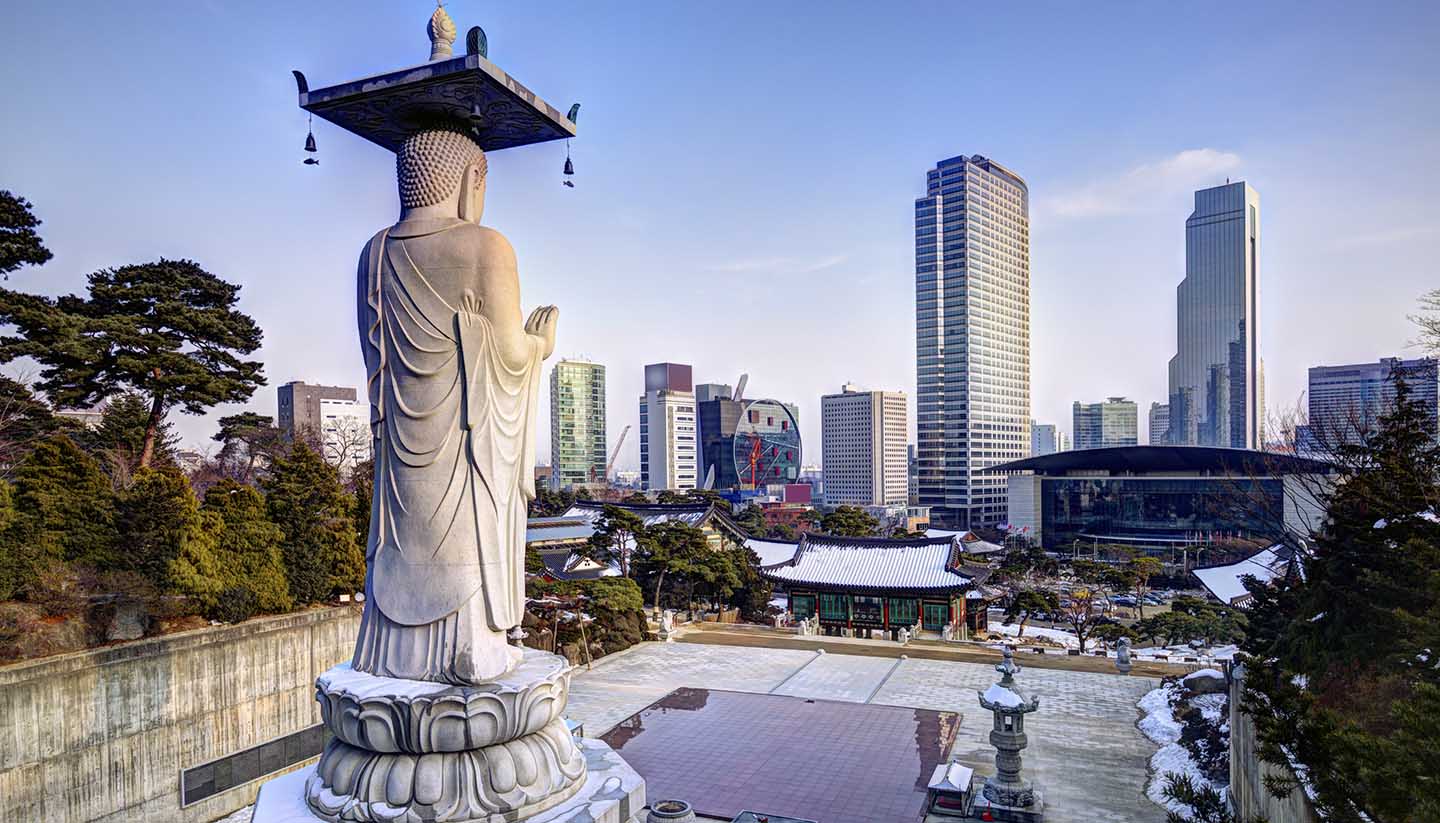Seoul History
Although its ultra-modern appearance might not suggest it, Seoul has been occupied since the Paleolithic Age, and it was first mentioned in official documents back in 18BC. Known as Wiryeseong, it was initially the capital of the Kingdom of Baekje but over the next 1,000 years, control of the city went back and forth between rival dynasties.
Thanks to the constant fighting, the real making of Seoul didn’t happen until 1104, when King Sukjong of the Goryeo Dynasty built a palace there. When the Joseon Dynasty took control in 1394, Seoul became their capital and their rule ushered in a time of great political and economic reform and creativity.
In the late 19th century, after hundreds of years of isolation from the outside world, Seoul, which had fallen behind the rest of the world, opened its gates to foreigners and swiftly began to modernise.
It became the first city in East Asia to get such amenities as electricity, running water and the telephone, and boomed as a result. Increasing trade also helped fuel its rise and by the dawn of the 20th century, it had become one of the cleanest and most modern cities in the Korean Empire.
But dark clouds were on the horizon when the Korean lands were absorbed into the Japanese Empire in 1910. Run as a satrap of Japan until 1945, it suffered grievously during WWII, but worse was to come. With Korea divided between north and south and tensions running high, Seoul’s citizens were forced into a second war in 1950.
When the war ended in 1953, much of the city was gone and it became the subject of intensive building efforts in the years that followed. That building boom laid the foundations of the modern city.
Hosting the 1988 Summer Olympics announced to the world that Seoul was back and, together with the World Cup in 2002, they helped cement the reputation for ultra-modernity that the city still enjoys today.
Did you know?
• Seoul changed hands four times during the Korean War, held by North Korea, the UN, China and finally South Korea.
• The vast central palace of the Joseon dynasty, Gyeongbokgung, was destroyed during the Imjin War, restored, and then damaged again by the Japanese in WWII.
• Seoul’s Myeongdong Cathedral was a centre of pro-democracy protest throughout the era of military rule in the 1970s and 80s.


